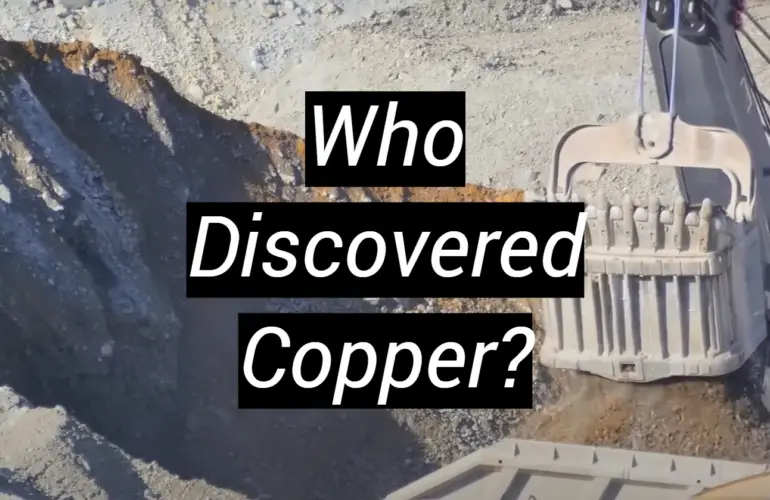Copper, one of the oldest known metals, holds a remarkable place in the annals of human history. Its discovery, believed to have taken place around 9000 BCE, was a pivotal moment that forever altered the course of civilization. As ancient societies stumbled upon this versatile metal, they unknowingly unlocked a world of possibilities, setting the stage for unprecedented technological advancements and cultural growth.
The exact identity of the individual or group responsible for this groundbreaking discovery remains shrouded in the mists of time. However, archaeological evidence suggests that it was likely stumbled upon by early humans during their quest for survival and exploration. These resourceful individuals, through their sheer curiosity and ingenuity, stumbled upon a reddish-brown mineral that exhibited remarkable properties. Little did they know that this seemingly ordinary substance would go on to shape the destiny of humanity.
This article takes you on a captivating journey through the historical accounts of copper’s discovery and its early utilization. Delve into the fascinating narratives of ancient civilizations as they uncover the secret treasures hidden within this unassuming metal. Discover how copper’s inherent malleability and excellent conductivity revolutionized the way humans lived, paving the way for the birth of metallurgy and the dawn of a new era.
Embark on this enlightening exploration of copper’s rich history and gain a deeper appreciation for the pivotal role it played in shaping our world as we know it today.
Copper Findings
Archaeological evidence suggests that copper was first discovered by our early ancestors during the Neolithic period, around 9000 BCE. This groundbreaking discovery was not the result of a calculated scientific endeavor but rather a fortuitous find. As early humans roamed the lands, they stumbled upon nuggets of native copper, a naturally occurring pure metal, nestled in regions with copper-rich soils. These areas, primarily located in what is now modern-day Iran and Iraq, served as the cradle of copper extraction and usage, where the ancient art of working with this precious resource began to take shape.
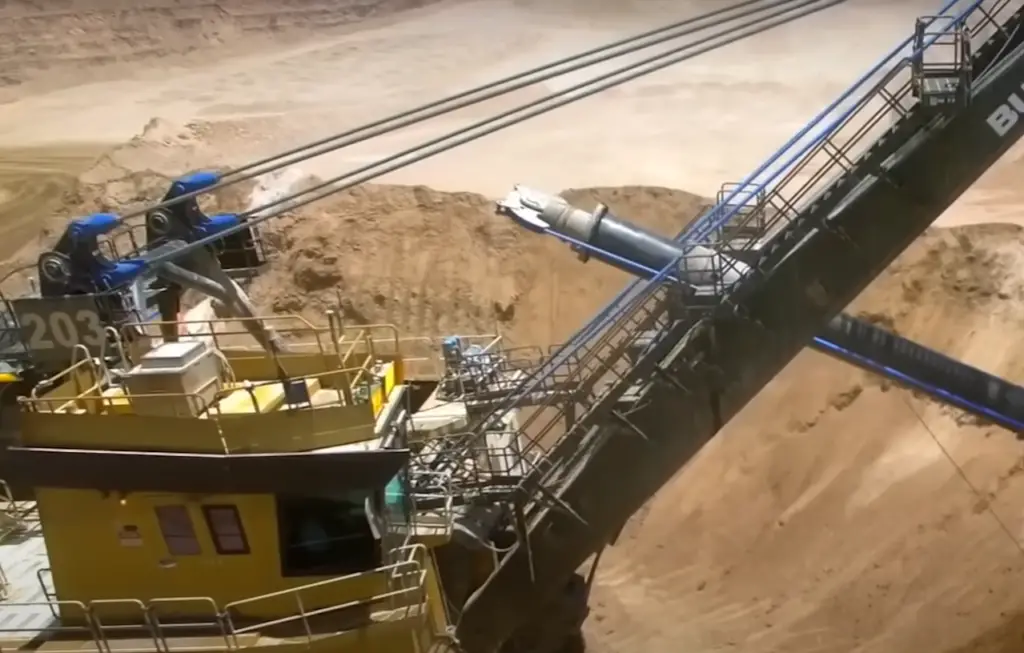
Over time, the knowledge and techniques of copper working gradually disseminated to various corners of the globe, sparking a widespread utilization of this valuable resource. As civilizations emerged and flourished, the applications of copper expanded, covering a vast spectrum of industries and domains. From ornate jewelry and intricate sculptures to functional tools and weapons, copper became an indispensable material, playing a crucial role in shaping the trajectory of human history.
It serves as a reminder that sometimes, the most transformative discoveries arise from serendipitous encounters with the natural world, forever altering the course of human civilization.[1]The Copper Ages
With the discovery and utilization of copper, human societies entered a transformative phase known as the Copper Age or the Chalcolithic period. This era, which spanned from around 5000 BCE to 3000 BCE, witnessed the widespread adoption of copper tools and weapons, revolutionizing early human civilizations.
The malleability of copper made it an ideal material for crafting tools, enhancing the productivity and efficiency of early societies. Its ability to be shaped and molded with relative ease allowed for the creation of intricate and functional tools that greatly improved various aspects of daily life.
As the Copper Age progressed, humans began to experiment with a revolutionary process called smelting. This technique involved the heating of copper in a furnace to remove impurities, resulting in a purer and stronger metal. The advent of smelting marked a significant turning point, as it led to the transition into the Bronze Age. During this new era, societies started combining copper with other metals to create alloys, most notably bronze. This innovation not only expanded the range of tools and weapons available but also opened up new avenues for artistic expression and cultural development.
The importance of copper in human history cannot be overstated. Its discovery, exploitation, and subsequent advancements in its usage laid the foundation for significant technological and societal progress. The mastery of copper paved the way for future advancements in metallurgy, driving the evolution of civilizations and shaping the course of human development.[2]
Copper in Egypt
Egypt holds a pivotal role in the history of copper, being one of the first civilizations to fully understand and exploit its potential. The ancient Egyptians started using copper as early as 3900 BCE, predominantly for tool-making. Copper chisels, adzes, and needles were commonly found in their toolkits, showcasing their ingenuity in utilizing this versatile metal.
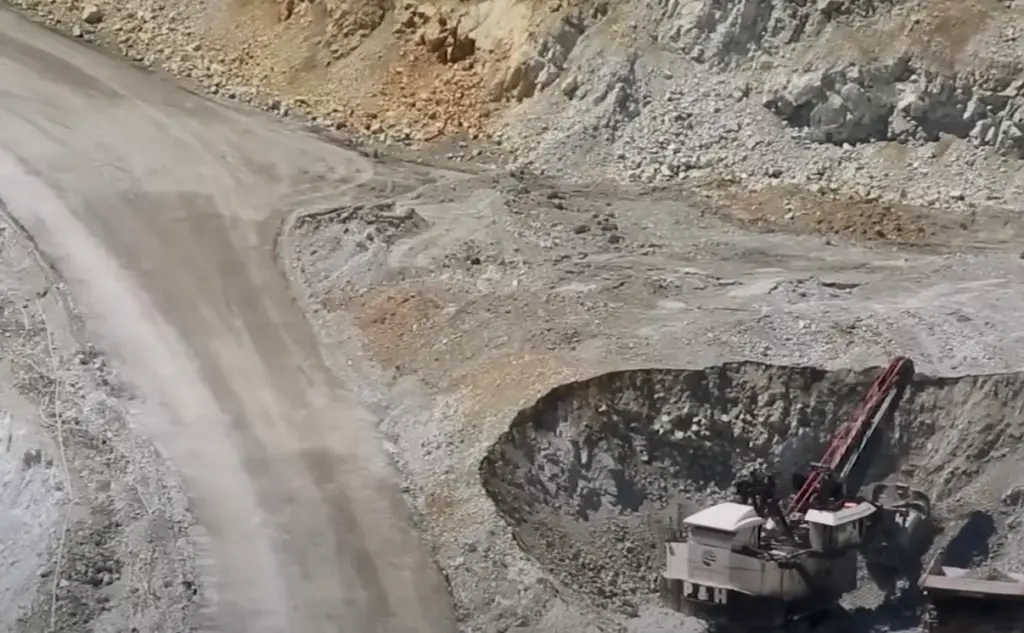
But the significance of copper in ancient Egypt extended beyond its practical uses. The Egyptians demonstrated remarkable proficiency in shaping copper into various forms for ornamental and ceremonial purposes, creating some of the earliest known examples of copper artwork. Intricate copper jewelry, figurines, and even statues adorned their temples and tombs, reflecting their artistic prowess and aesthetic sensibilities.
Over time, the Egyptians refined their copper-working techniques, even venturing into early forms of metallurgy. They developed methods to smelt copper ores and remove impurities, leading to the production of a stronger, higher-quality metal. This advancement allowed them to produce more effective tools and weapons, bolstering their societal and military prowess.
Egypt’s rich copper history is well-documented in archaeological findings and ancient texts. The famous Pyramid Texts, inscribed in the pyramids of the Old Kingdom around 2400 BCE, make numerous references to copper, indicating its prominence in their society. These texts not only provide insights into the technical aspects of copper usage but also shed light on the cultural and religious significance associated with this remarkable metal.
In essence, copper significantly contributed to the technological, artistic, and cultural evolution of ancient Egypt, underpinning its status as a cradle of human civilization. Its profound impact on various aspects of Egyptian life is a testament to the resourcefulness and innovation of this ancient civilization.[3]
Copper in the Near East
The Near East, encompassing areas of modern-day Turkey, Syria, and Cyprus, played a crucial and fascinating role in the evolution of copper use. Around the 4th millennium BCE, this region emerged as a pioneer in copper smelting, showcasing advanced methods of extracting copper from its ores. The skilled artisans of the Near East developed intricate techniques that allowed them to harness the transformative power of fire to separate copper from other minerals, propelling the region to the forefront of early metallurgical advancements.
The rich copper resources found in the extensive mines of Cyprus serve as a testament to the Near East’s abundant natural wealth and its early exploration of mining activities. These ancient mines, with their labyrinthine tunnels and vast galleries, reveal the immense scale of copper extraction that took place in this region.
Archaeological excavations in Anatolia, which is now part of modern Turkey, have unearthed captivating evidence of the region’s early copper metallurgy. The discoveries of artifacts dating back to as early as 6000 BCE provide a glimpse into the remarkable craftsmanship and ingenuity of the ancient inhabitants of this region. These artifacts, ranging from intricately designed tools to beautifully crafted ornamental pieces, highlight the early mastery of copper working in Anatolia. Copper, with its malleability and durability, found its way into every facet of daily life, from agricultural tools to exquisite jewelry, showcasing the profound impact of copper in shaping the material culture of the time.
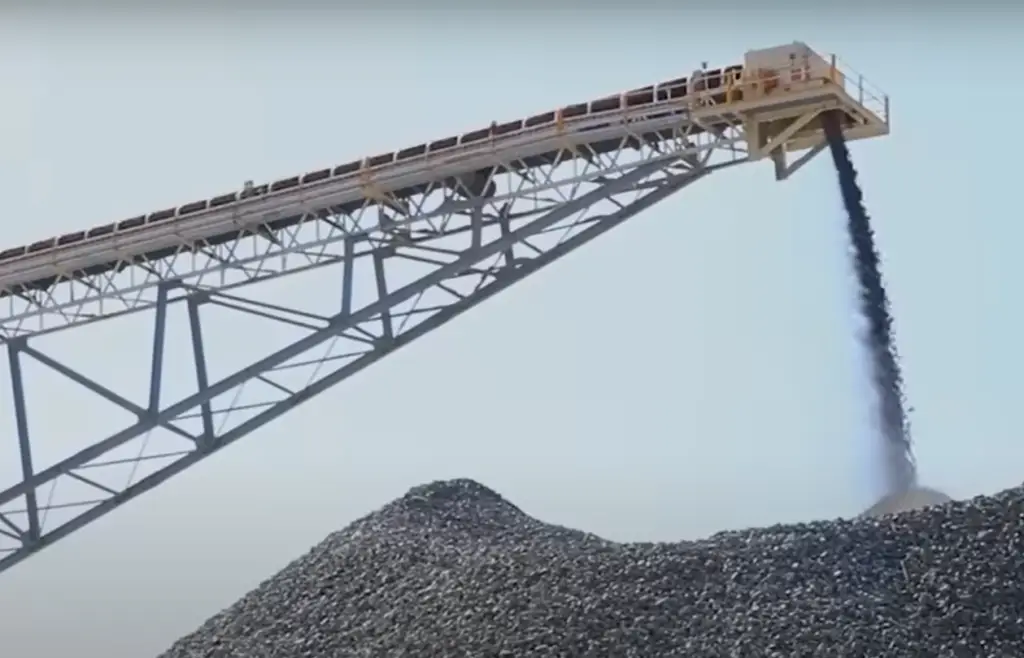
However, one of the most significant developments that emerged from the Near East was the innovation of alloying copper with tin, resulting in the creation of bronze. This technological leap, which marked the ushering in of the Bronze Age around 3000 BCE, revolutionized the ancient world. The discovery of bronze, an alloy stronger and more durable than copper alone, transformed the landscape of tools, weapons, and art, propelling civilizations to new heights of innovation and sophistication. The Near East, with its abundant copper resources and mastery of bronze production, became a major hub in the ancient metal trade, connecting distant lands and forging new networks of cultural exchange.
The story of copper in the Near East is not just one of technological advancements and industrial prowess; it is a tale of human ingenuity, resourcefulness, and the profound impact that material resources can have on the course of human civilization. The Near East, with its ancient copper mines, skilled artisans, and innovative use of alloys, played a pivotal role in shaping the trajectory of human history in this part of the world, leaving behind a rich legacy that continues to captivate archaeologists, historians, and enthusiasts alike.[3]
Copper in the USA
The USA can proudly trace its rich history of copper mining and production back to ancient times. As early as 5000 BCE, indigenous peoples of North America were already engaged in mining copper on the Keweenaw Peninsula in Michigan, home to some of the purest copper deposits in the world. This early mining activity laid the foundation for the future growth and development of the copper industry in the region.
However, it wasn’t until the mid-19th century that large-scale copper mining and production truly took off in the USA. In 1705, the first significant copper mining operation was established in Connecticut, marking an important milestone in American copper history. As the nation expanded westward, a significant copper find in Arizona in the late 19th century sparked a major boom in the industry. With its abundance of rich copper deposits, Arizona quickly emerged as the leading copper-producing state in the USA, playing a pivotal role in the country’s economic development.
Advancements in technology during the late 20th century revolutionized the copper extraction and refining processes, propelling the USA to the forefront of global copper production. These technological breakthroughs not only increased efficiency but also paved the way for further innovation in the industry. Today, the USA’s copper industry continues to thrive, creating jobs, fueling local economies, and driving advancements in technology and infrastructure across the country.
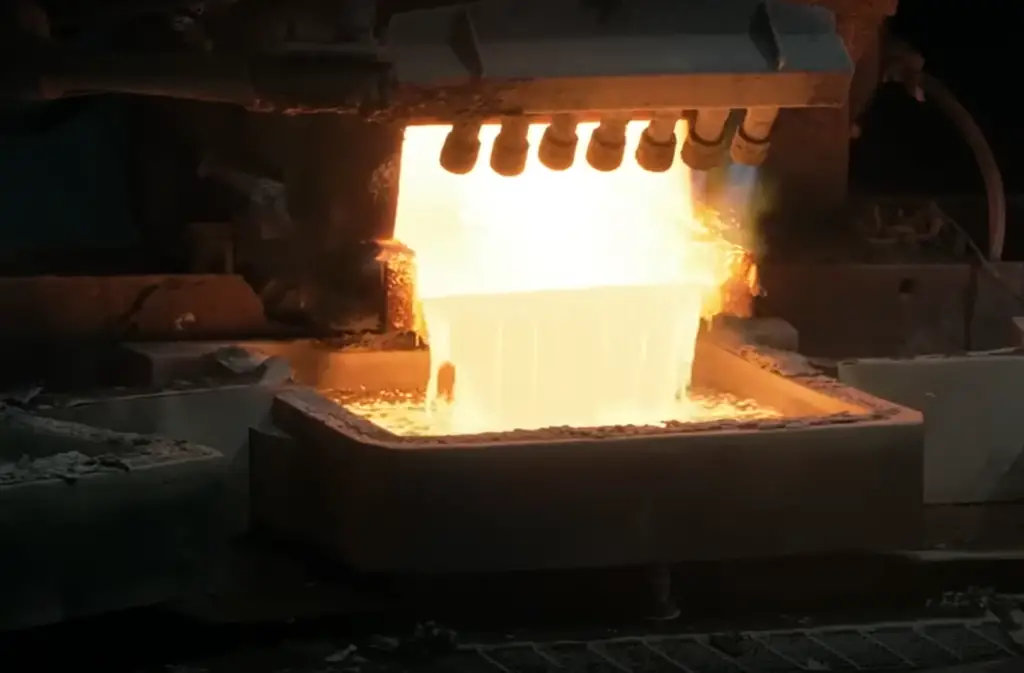
The story of copper mining and production in the USA is one of resilience, ingenuity, and economic significance. From ancient indigenous mining practices to modern-day technological advancements, the USA’s copper industry remains a vital pillar of the nation’s economy, shaping communities, powering innovation, and contributing to the overall progress and prosperity of the country.
FAQ
Who Found The First Copper?
Unfortunately, the exact identity of the individuals who first discovered copper thousands of years ago remains unknown. However, historical evidence points to the unnamed ancestors of the ancient civilizations in the Middle East, particularly those living in the area of modern-day Iran and Iraq. These early humans, driven by curiosity and resourcefulness, were likely experimenting with rocks and ores when they stumbled upon copper. As they observed its unique properties—such as its malleability, durability, and resistance to corrosion—they recognized its potential and began to develop simple tools and weapons from this newfound metal. This monumental discovery marked a significant transition from the Stone Age to the Copper Age, setting the stage for the subsequent Bronze Age and Iron Age. Despite the absence of precise historical records, the discovery of copper undoubtedly played a pivotal role in shaping human civilization as we know it today, influencing advancements in technology, trade, and societal development. The impact of this discovery reverberates through the ages, leaving an indelible mark on the course of human history.
Who Discovered And Named Copper?
While the discovery of copper dates back thousands of years to unknown ancient civilizations, the naming of this essential metal is a more recent phenomenon. The word “copper” originated from the Latin word “cuprum,” which means “metal of Cyprus.” This is a reference to the large quantities of copper that were mined on the Mediterranean island of Cyprus during the Roman era. As for the chemical symbol of copper, Cu, it is also derived from the Latin word “cuprum.”
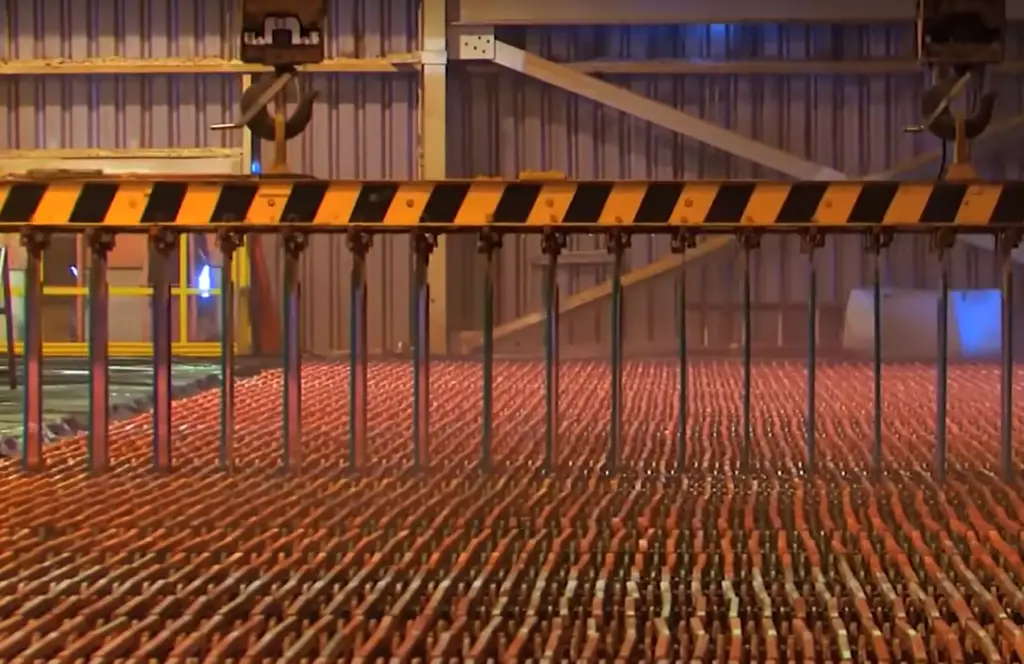
Copper, with its distinctive reddish-brown hue, has played a crucial role in human history. It has been used for various purposes, from crafting tools and weapons to creating beautiful works of art. The exceptional conductivity of copper has made it an indispensable material in electrical wiring and plumbing systems, ensuring the smooth flow of electricity and water in our modern lives.
This remarkable metal continues to be a vital component in various industries, including construction, electronics, and renewable energy. Its antibacterial properties also make it ideal for applications in healthcare settings.The legacy of copper stretches across time, connecting ancient civilizations to the present day. It serves as a reminder of our ability to harness the earth’s resources and shape them into tools that improve our lives. As we continue to explore and innovate, copper remains an essential element that stands the test of time, embodying both the past and the future of human progress.
When Was Copper First Discovered?
Though the exact timeline is unclear due to the absence of written records, it is widely believed that copper, a remarkable metal with a rich history, was first discovered and utilized during the Neolithic period around 10,000 years ago. The earliest known artifacts made from this captivating metal, which were unearthed in the Middle East, date back to this era and provide us with a glimpse into the ingenuity of our ancestors. It was during this transformative period that human societies underwent a profound shift, transitioning from a nomadic, hunting-gathering lifestyle to a settled, agrarian way of life.
As early humans roamed the Earth, they likely stumbled upon copper in its naturally occurring native state, shimmering on the surface of the land. Its unique reddish hue, coupled with its malleability, would have undoubtedly piqued their curiosity and sparked their creativity. With their resourcefulness and dexterity, these ingenious individuals began fashioning simple tools and exquisite ornaments from this newly discovered metal, harnessing its potential to enhance their daily lives.
The discovery of copper proved to be a significant milestone for humanity, marking the end of the Stone Age and ushering in a new era known as the Copper Age. This pivotal development laid the foundation for the advancement of civilizations, enabling the creation of more sophisticated tools, the expansion of trade networks, and the flourishing of artistic expression. It is a testament to the indomitable spirit of human innovation and our unwavering desire to push the boundaries of what is possible.
By delving into the captivating story of copper’s discovery, we gain a deeper appreciation for the ingenuity of our ancestors and the profound impact that this humble metal has had on shaping the course of human history.
How And Why Was Copper Discovered?
The discovery of copper came about likely due to early human curiosity and necessity. As humans progressed from a lifestyle of hunting and gathering to settling and farming, they began to explore and exploit the materials around them. Copper, being one of few metals found in its natural form, was one of the first to be discovered.
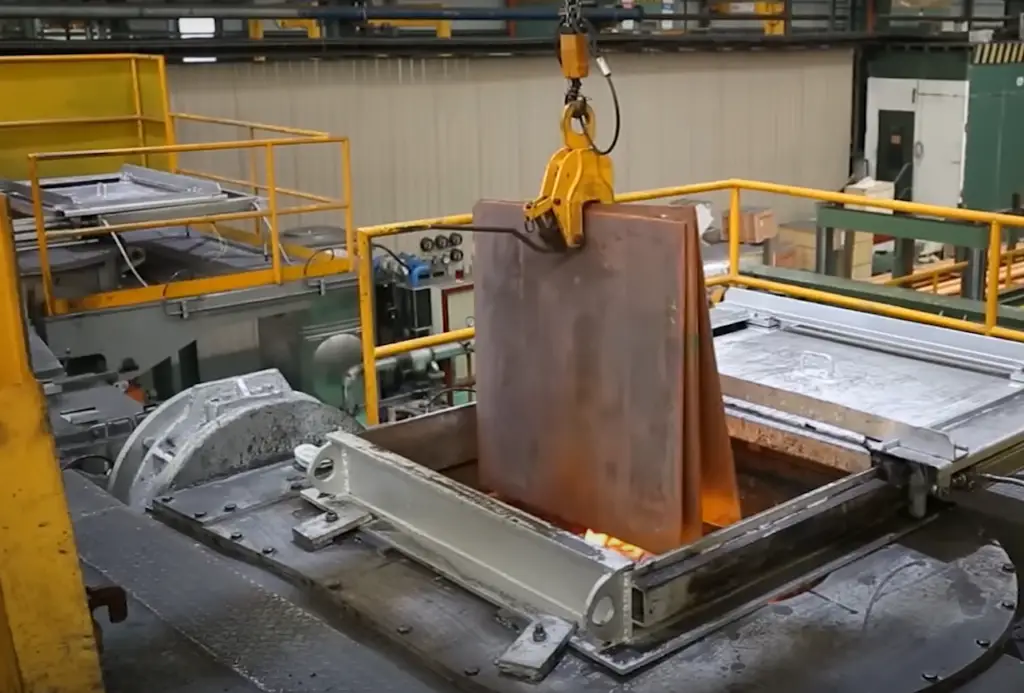
Its distinctive reddish-brown hue and the ease with which it could be shaped and formed would have piqued the interest of these early humans. They would have observed its unique properties, such as its exceptional conductivity and resistance to corrosion. This would have sparked their imagination and experimentation, leading them to harness copper for various purposes.
As for why copper was discovered, it’s largely attributed to the practical benefits it provided. Copper’s malleability made it an excellent material for crafting tools, weapons, and ornaments, significantly advancing the capabilities of these early societies. Furthermore, copper’s durability and resistance to corrosion ensured these tools and artifacts lasted longer, improving their utility and effectiveness. These factors, coupled with the metal’s relative abundance, made copper a valuable resource, encouraging its continued use and exploration.
This discovery set the stage for many technological advancements to follow, ultimately shaping human civilization as we know it. The utilization of copper laid the foundation for the development of metalworking techniques and the creation of complex societies. It allowed for the creation of more sophisticated tools and weapons, enabling humans to expand their capabilities in various fields such as agriculture, construction, and warfare. The discovery of copper revolutionized the way early humans lived and interacted with their environment, marking a significant milestone in our history.
Where Is Copper Found?
Copper, a widely distributed element in nature, plays a significant role in various industries. It is found abundantly in the earth’s crust, constituting approximately 0.0058 percent of its weight. Remarkable copper deposits are concentrated in countries such as Chile, the United States, Mexico, Zambia, and Canada. Notably, Chile stands as the world’s leading copper producer, boasting the largest known reserves of this precious metal. Meanwhile, the United States ranks third globally in copper reserves, primarily sourced from the states of Arizona and Utah. Africa also holds significant copper resources, specifically in Zambia and the Democratic Republic of Congo. In Asia, China, India, and Indonesia emerge as major copper-producing nations. Due to the relatively low copper content in ores, extensive mining and refining operations are required to extract pure copper, making it a complex and intricate process.
Where Is Copper Naturally Found?
Copper, a versatile and valuable metal, can be naturally found in the earth’s crust in a pure form known as “native copper.” This native copper is primarily found in volcanic regions, particularly in North and South America, where the intense geological activity promotes its formation. Moreover, native copper can also be found in regions of natural weathering, where the exposure to environmental elements gradually reveals this precious metal.
In addition to native copper, copper is also present in various minerals, such as chalcopyrite, azurite, malachite, and bornite. These minerals serve as significant sources of copper extraction and are commonly mined in countries with substantial copper deposits, including Chile, the United States, and Zambia. The mining operations in these countries contribute to the global supply of copper, meeting the ever-growing demand for this essential metal.
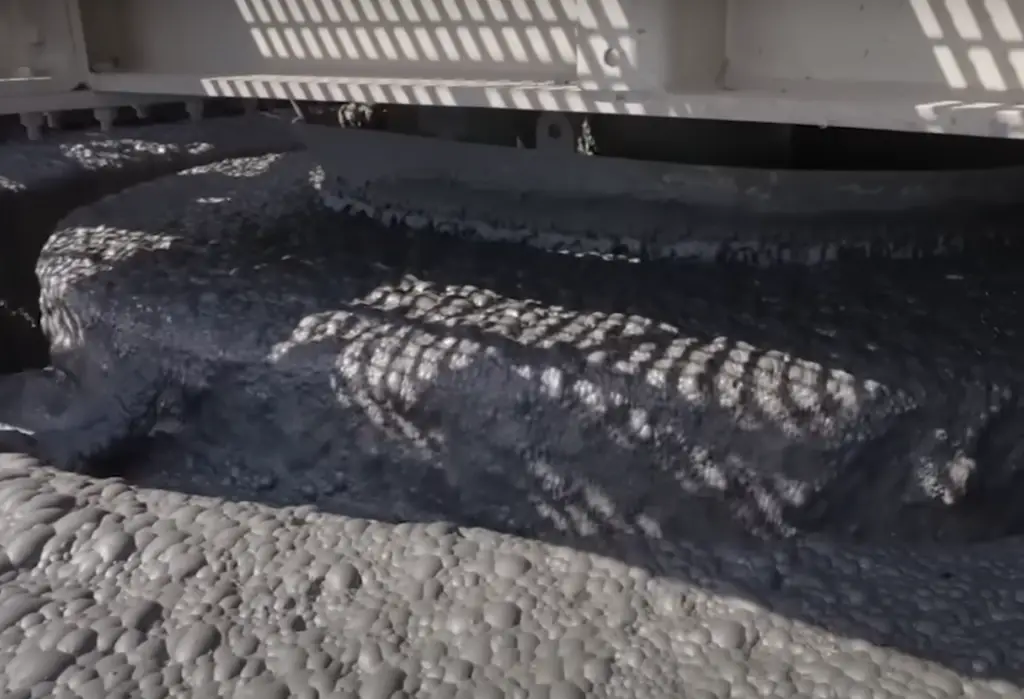
While native copper showcases its purity and rarity, it is worth noting that the majority of copper mined and used today comes from minerals. These minerals contain copper in varying concentrations, making them the primary source of copper production worldwide.
Who Is Copper Named After?
Copper, a versatile and valuable metal, holds an intriguing history that dates back to ancient times. Interestingly, its name is not associated with a specific person or entity, but rather with a geographical connection. The roots of its name can be traced back to the Latin word “cuprum,” which translates to “metal of Cyprus.” This connection arises from the fact that the ancient Romans heavily relied on copper sourced from the island of Cyprus. Consequently, this geographical association bestowed upon copper a name that has stood the test of time.
Moreover, not only does the name of copper have a geographical origin, but its chemical symbol, Cu, also finds its roots in its Latin name. This further adds to the fascinating story behind the metal’s nomenclature. In essence, one could argue that copper is named after the place that played a significant role in its production during antiquity.
By delving into the etymology of copper, we gain a deeper appreciation for the historical significance and cultural connections of this remarkable metal.
Why Was Copper So Important?
C’s importance stems from its unique properties and practical applications that have played a pivotal role in shaping human civilization. As one of the few metals readily available in its natural form, copper was easily moldable and manipulated by early humans, enabling the creation of essential tools, weapons, and exquisite jewelry. This remarkable metal served as a catalyst for technological progress, empowering humanity to advance.
From a technological standpoint, copper’s exceptional conductivity of heat and electricity made it invaluable across various industries. Its unrivaled performance in electronics, telecommunications, and energy production propelled innovation and revolutionized these fields. Moreover, copper’s remarkable resistance to corrosion ensured the durability and longevity of components, enhancing overall reliability.
Furthermore, the relative abundance of copper within the earth’s crust contributed to its significance as a widely accessible resource. This abundance facilitated its exploitation and utilization, allowing for its widespread application. In addition to its practicality, copper’s distinct aesthetic appeal made it a favored material for decorative and architectural purposes, adding a touch of elegance and sophistication to various designs.
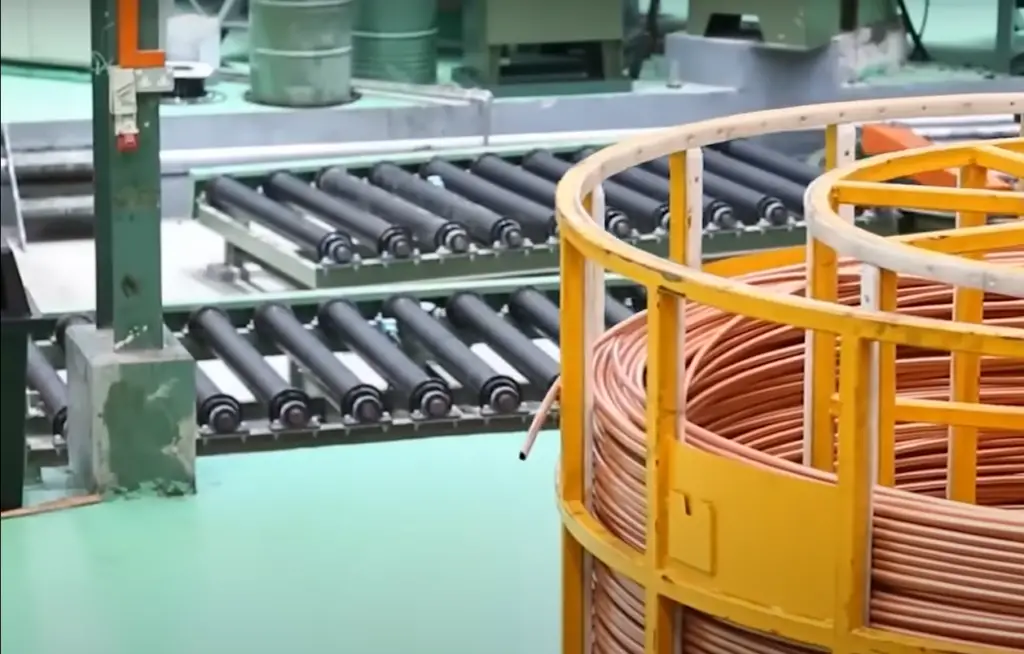
In the realm of medicine, copper’s antimicrobial properties have played a crucial role in its utilization within medical tools and healthcare facilities. Its natural ability to inhibit the growth of microorganisms has contributed to maintaining a sanitary environment, further safeguarding public health.
In essence, copper’s importance lies not only in its versatility but also in the broad spectrum of its applications. Throughout human history, copper has remained an indispensable resource, driving progress and enriching our lives through its myriad of uses. Its legacy as a cornerstone in the evolution of civilization is a testament to its enduring significance.
Where Is The Most Copper In The World?
The country with the most copper reserves in the world is Chile, housing an estimated 200 million tons of the metal. This vast amount of copper is mainly attributed to the presence of the Escondida mine, which is located in the arid Atacama Desert. Notably, the Escondida mine is considered the world’s largest copper mine, boasting the largest accumulation of copper ores.
However, it’s important to note that the United States also plays a significant role in the global copper market. With vast reserves primarily found in Arizona and Utah, the United States contributes to the overall supply of copper worldwide.
In addition to Chile and the United States, other countries also possess significant copper reserves. Peru, Australia, Russia, and Indonesia all have notable copper deposits that contribute to the global supply chain.
Interestingly, when considering copper deposits per land area, the small island country of Cyprus holds historical significance. It is often referred to as the “Island of Copper” due to its rich copper heritage. Cyprus, being the namesake of copper (cuprum), was historically one of the world’s primary sources of the material. This showcases how the abundance and distribution of copper can vary greatly across different geographical contexts.
How Rare Is Copper On Earth?
Copper, a widely available element on Earth, holds the 25th position in terms of abundance among all the elements in the Earth’s crust. While it may not be considered rare, it is not found in substantial quantities in its pure form. The estimated copper content in the Earth’s crust is approximately 0.0058 percent by weight. However, this versatile metal predominantly exists in the form of copper ores, intermingled with other valuable metals such as zinc, lead, and gold. The extraction of copper from these ores necessitates extensive mining and refining processes. Despite its abundance, the intricate and labor-intensive nature of mining and refining contributes to the economic value of copper.
How Was Copper Used When It Was Discovered?
When copper was first discovered, its remarkable malleability and durability led early humans to utilize it primarily for making tools and weapons. They found that copper could be easily shaped and manipulated into various forms without the need for advanced technology. This made it an ideal material for crafting practical items such as spearheads, knives, and axes.
However, the versatility of copper extended beyond the realm of tools and weaponry. Its distinctive reddish-brown color made it an attractive choice for decorative items and jewelry. Excavations from sites dating back to 9000 BC have unearthed copper beads, indicating its early use in adornment.
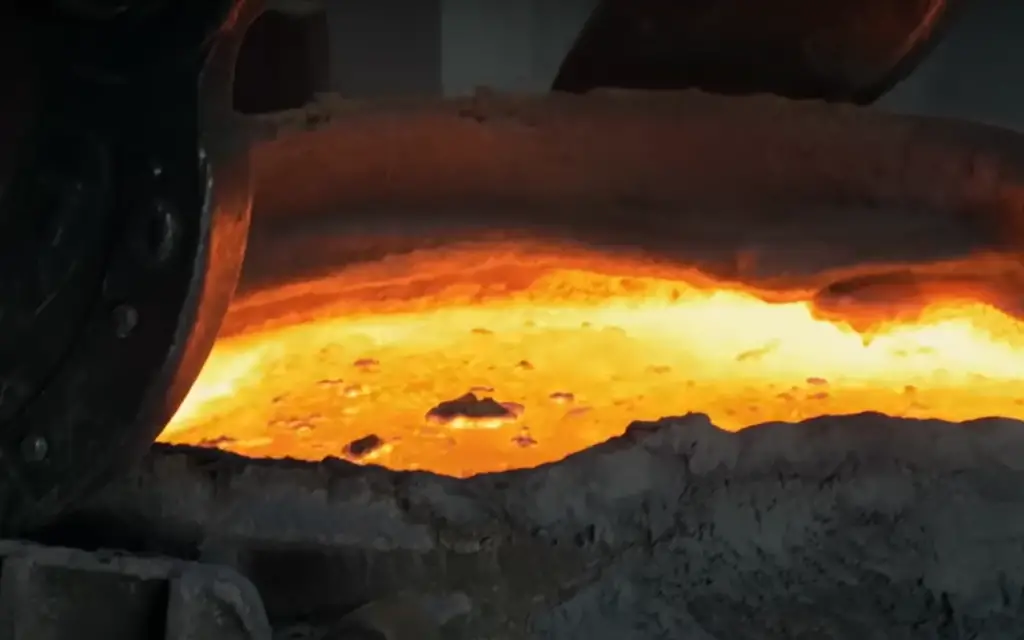
As civilizations advanced, the importance of copper in construction became evident. It was employed in various architectural applications, including roofing, cladding, and plumbing. In fact, even the iconic Statue of Liberty is clad in a thin layer of copper, showcasing its enduring presence in monumental structures.
Copper also played a significant role in the realm of currency. The first metal coins were minted from copper due to its abundance and ease of workability. This practice continued for centuries, underscoring its intrinsic value in human society.
While the exploitation of copper’s high thermal and electrical conductivity came later in human history, it ultimately became a cornerstone of its use in modern technology and industry. Once its exceptional properties were discovered, copper found its way into a wide range of applications, from electrical wiring to electronic devices.
In essence, the extensive range of copper’s applications throughout history mirrors the progression of human civilization itself, showcasing its enduring significance as a critical resource in various aspects of our lives.
Useful Video: The Copper Age Explained (The rise of civilization)
Conclusion
Copper’s role in shaping human civilization cannot be overstated. From its early use in tools and weapons to modern applications in electronics, construction, and beyond, copper has continually showcased its remarkable versatility and utility across countless ages and industries. Its unique properties, including its excellent electrical conductivity and corrosion resistance, along with its relative abundance in the Earth’s crust, have firmly established copper as a key material in the development and progress of societies around the world.
The fascinating journey of copper, from its ancient extraction in places like Cyprus, where it was famously mined as early as 4,000 BCE, to its contemporary mining in countries like Chile, where it remains a vital part of the economy, stands as a testament to its enduring importance. Through the ages, copper has played an integral role in various civilizations, fueling technological advancements, architectural marvels, and artistic expressions.
In essence, the story of copper serves as a mesmerizing mirror to the story of human progression, underscoring the profound ways in which the evolution of a civilization is intertwined with the resources it harnesses. From the ancient civilizations that revered copper as a sacred metal, to the modern world’s reliance on its conductivity for powering our digital age, copper’s influence on humanity’s journey is undeniable. Its legacy continues to shape our lives, reminding us of the interplay between innovation, sustainability, and the remarkable resources that propel our collective advancement.
References:
- https://sites.dartmouth.edu/toxmetal/more-metals/copper-an-ancient-metal/
- https://www.worldcoppersmith.com/articles/copper-in-history/
- https://www.thoughtco.com/copper-history-pt-i-2340112

